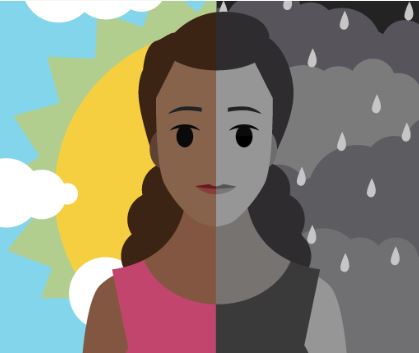
Within the last few months, a generic formulation of Latuda (lurasidone) has become available. Should you consider prescribing it for adult Bipolar I Depression?
Previously, this medication cost >$1,200/month and was thus out of reach for most patients and/or required insurance pre-authorization. Now that the price of lurasidone has fallen dramatically, it is worth comparing this medication to quetiapine, which is also generic and also has an FDA indication for adult Bipolar I Depression.
There aren’t very many head-to-head trials, but in meta-analyses of monotherapy for adult Bipolar I Depression, both lurasidone and quetiapine appear to be efficacious. Several published treatment algorithms consider both medications to be first-line options as monotherapy for this indication. In other studies, lurasidone has demonstrated efficacy for adult Bipolar I Depression when used as an adjunct to lithium or divalproex and, indeed, Latuda garnered FDA-approval for adjunct use for this indication.
FDA package inserts are available on the FDA approved drugs site. Package inserts contain a lot of useful information and are likely underutilized in our era of quick, app-based, medication references. When comparing the data reported in the package inserts for lurasidone and quetiapine, lurasidone appears to have a lower incidence of the antipsychotic-associated metabolic syndrome (weight gain, new-onset diabetes, new-onset hyperlipidemia, etc.). Lurasidone, at least at low doses, is also felt to be less sedating than quetiapine. However, when compared to quetiapine, lurasidone appears to have a higher incidence of parkinsonism, akathisia, and other D2 blockade-mediated side effects. For more details on the side effects of these medications, including information on the Black Box warnings, QTc prolongation, monitoring of the metabolic syndrome, and other adverse effects, please refer to your own medication reference material or the free sites available via Heal WA.
Another important difference between lurasidone and quetiapine is that lurasidone needs to be taken with a >350 calorie meal. This dramatically increases the absorption of lurasidone. However, food insecurity is a problem experienced by many people in our society, and it is important to ask your patients if they have regular access to a >350 calorie dinner.
Lurasidone dosing is usually initiated at 20mg/day. Though the FDA max dose is 120mg/day, some studies of adult Bipolar I Depression suggest that high-end dosing does not necessarily increase efficacy but might increase the risk of side effects. The mean (SD) lurasidone dose was 64.1 (14.4) mg in a 24-week open label study authored by Ketter et al for the journal Depression and Anxiety. Thus, rather than automatically pushing the lurasidone dose to the top end, it could be useful to first give the patient a good trial in the middle of the dosing range.
If you would like more information on the treatment of adult Bipolar I Depression, please call the Psychiatry Consultation Line (877-WA-PSYCH) and one of our psychiatrists would be happy to review the options with you.
Author
Ryan Kimmel, MD
Professor, University of Washington School of Medicine, Department of Psychiatry and Behavioral Sciences
Chief of Psychiatry, University of Washington Medical Center
Medical Director, Psychiatry Consultation Line
Learn More
Bipolar Disorder — Screening and Diagnosing in Primary Care
UW Psychiatry and Addictions Case Conference series (UW PACC)*
Presenter: Joseph Cerimele, MD, MPH
The objectives of this presentation are to describe1) the clinical epidemiology of individuals with bipolar disorder in primary care settings; 2) techniques to improve the recognition of bipolar disorder in primary care patients; and 3) clinical characteristics of patients with bipolar disorder in primary care.
*The UW Psychiatry and Addictions Case Conference series (UW PACC) is a free, weekly teleconference that connects community providers with UW Medicine psychiatrists and addictions experts. Sessions include both an educational presentation on an addictions or psychiatry topic and case presentations where providers who participate receive feedback and recommendations for their patients.


